Founded 15th century – present Allegiance Felipe VI | Country Spain Type Army | |
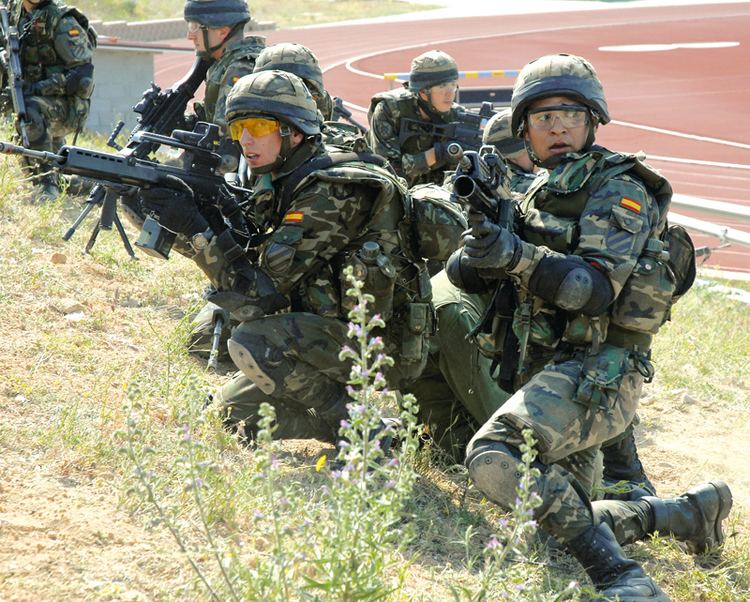 | ||
Size 74,661 personnel (2012) Mascot Crowned rampant eagle with Saint James cross Similar Profiles | ||
The Spanish Army (Spanish: Ejército de Tierra; lit. "Army of the Land/Ground") is the terrestrial army of the Spanish Armed Forces responsible for land-based military operations. It is one of the oldest active armies - dating back to the late 15th century.
Contents
- History
- Under the Habsburgs
- 18th century
- Napoleonic era and Restoration
- Second Republic 1931 36
- The Spanish Army under the Francoist Regime 1939 1975
- Second World War
- International Isolation
- Agreement with the United States Barroso Reform 1957
- Years of Economic Development Menndez Tolosa Reform 1965
- Initial years 1975 1989
- After the end of the Cold War 1989 present
- Personnel
- Weapons
- Combat vehicles
- Artillery
- Unmanned aerial vehicles
- Formation and structure
- Army Ministers
- Chiefs of the Army Staff
- Ranks and insignia
- Officer ranks
- Ranks of non commissioned officers and enlisted
- References
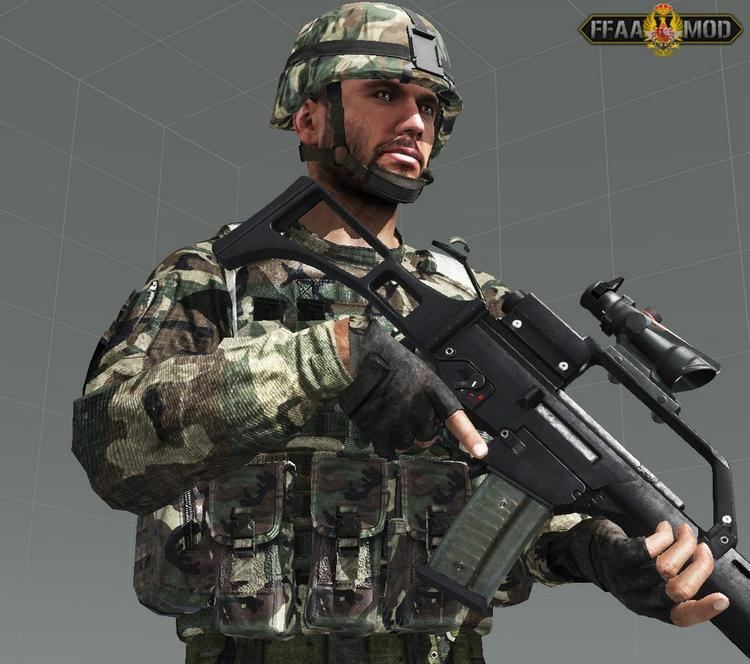
History

The Spanish army has existed continuously since the reign of King Ferdinand and Queen Isabella (late 15th century). The oldest and largest of the three services, its mission was the defense of Peninsular Spain, the Balearic Islands, the Canary Islands, Melilla, Ceuta and the Spanish islands and rocks off the northern coast of Africa.
Under the Habsburgs
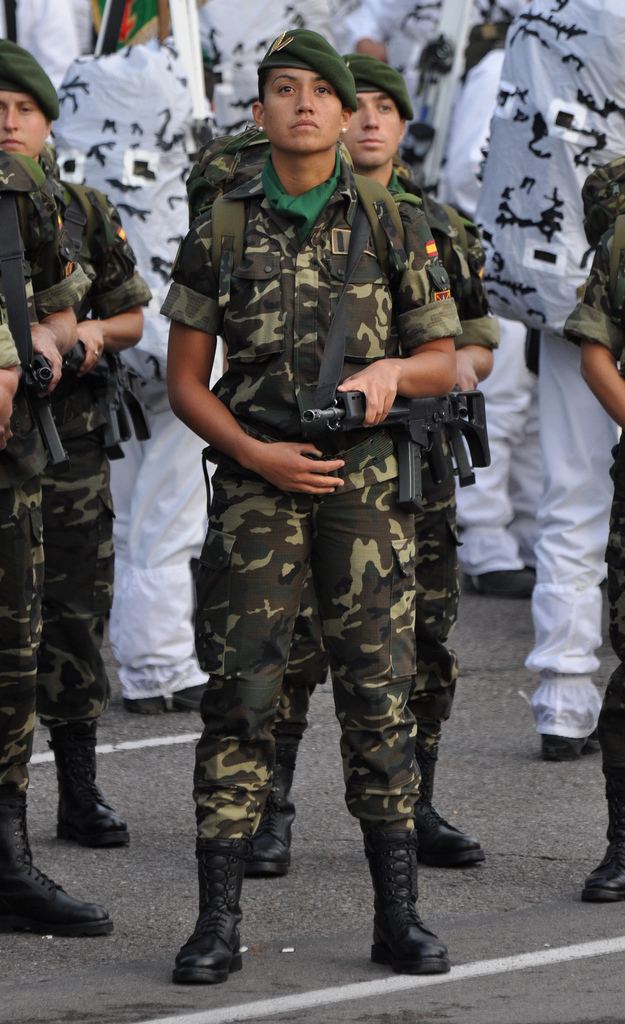
During the 16th century, Habsburg Spain saw a steady growth in its military power. The Italian Wars (1494–1559) resulted in an ultimate Spanish victory and hegemony in northern Italy by expelling the French. During the war, the Spanish army transformed its organization and tactics, evolving from a primarily pike and halberd wielding force into the first pike and shot formation of arquebusiers and pikemen, known as the colunella. During the 16th century this formation evolved into the tercio infantry formation. The new formation and battle tactics were developed because of Spain's inability to field sufficient cavalry forces to face the heavy French cavalry.
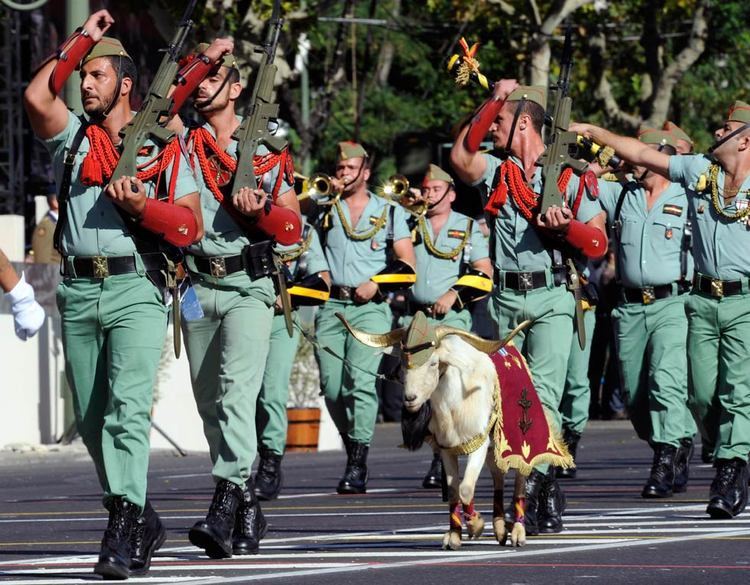
Backed by the financial resources drawn from the Americas, Spain could afford to mount lengthy campaigns against her enemies, such as the long running Dutch Revolt (1568–1609), defending Christian Europe from Ottoman raids and invasions, supporting the Catholic cause in the French civil wars and fighting England during the Anglo-Spanish War (1585–1604). The Spanish army grew in size from around 20,000 in the 1470s, to around 300,000 by the 1630s during the Thirty Years' War that tore Europe apart, requiring the recruitment of soldiers from across Europe. With such numbers involved, Spain had trouble funding the war effort on so many fronts. The non-payment of troops led to many mutinies and events such as the Sack of Antwerp (1576), when unpaid tercio units looted the Dutch city.
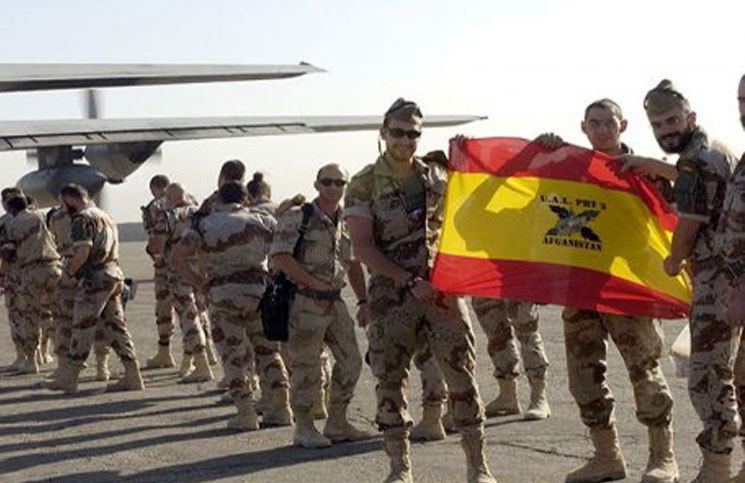
The Thirty Years' War (1618–1648) drew in Spain alongside most other European states. Spain entered the conflict with a strong position, but the ongoing fighting gradually eroded her advantages; first Dutch, then Swedish innovations had made the tercio more vulnerable, having less flexibility and firepower than its more modern equivalents. Nevertheless, Spanish armies continued to win major battles and sieges throughout this period across large swathes of Europe. French entry into the war in 1635 put additional pressure on Spain, with the French victory at the Battle of Rocroi in 1643 being a major boost for the French. By the signing of the Peace of Westphalia in 1648, Spain was forced to accept the independence of the Dutch Republic.
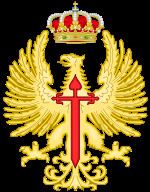
In the second half of the century, a much reduced and increasingly neglected Spanish army became infamous for being poorly equipped and rarely paid.
18th century
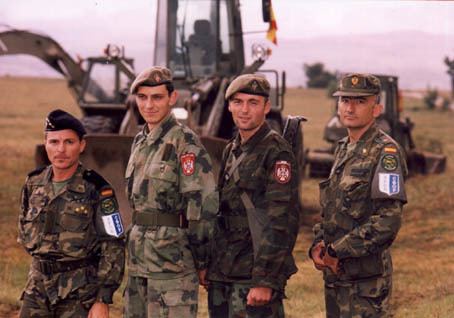
Spain remained an important naval and military power, depending on critical sea lanes stretching from Spain through the Caribbean and South America, and westwards towards Manila and the Far East.
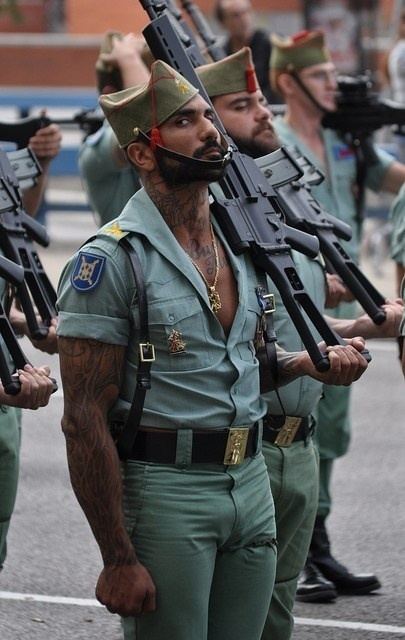
The Army was reorganised on the French model and in 1704 the old Tercios were transformed into Regiments. The first modern military school (the Artillery School) was created in Segovia in 1764. Finally, in 1768 King Charles III sanctioned the "Royal Ordinances for the Regime, Discipline, Subordination and Service in his Armies", which were in force until 1978.
Napoleonic era and Restoration
In the late 18th century, Bourbon-ruled Spain had an alliance with Bourbon-ruled France, and therefore did not have to fear a land war. Its only serious enemy was Britain, which had a powerful Royal Navy; Spain therefore concentrated its resources on its Navy. When the French Revolution overthrew the Bourbons, a land war with France became a danger which the king tried to avoid. The Spanish army was ill-prepared. The officer corps was selected primarily on the basis of royal patronage, rather than merit. About a third of the junior officers have been promoted from the ranks, and they did have talent, but they had few opportunities for promotion or leadership. The rank-and-file were poorly trained peasants. Elite units included foreign regiments of Irishmen, Italians, Swiss, and Walloons, in addition to elite artillery and engineering units. Equipment was old-fashioned and in disrepair. The army lacked its own horses, oxen and mules for transportation, so these auxiliaries were operated by civilians, who might run away if conditions looked bad. In combat, small units fought well, but their old-fashioned tactics were hardly of use against the Napoleonic forces, despite repeated desperate efforts at last-minute reform. When war broke out with France in 1808, the army was deeply unpopular. Leading generals were assassinated, and the army proved incompetent to handle command-and-control. Junior officers from peasant families deserted and went over to the insurgents; many units disintegrated. Spain was unable to mobilize its artillery or cavalry. In the war, there was one victory at the Battle of Bailén, and many humiliating defeats. Conditions steadily worsened, as the insurgents increasingly took control of Spain's battle against Napoleon. Napoleon ridiculed the army as "the worst in Europe," In the British who had to work with it agreed. It was not the Army that defeated Napoleon, but the insurgent peasants whom Napoleon ridiculed as packs of "bandits led by monks". By 1812, the army controlled only scattered enclaves, and could only harass the French with occasional raids. The morale of the army had reached a nadir, and reformers stripped the aristocratic officers of most of their legal privileges.
Second Republic (1931-36)
During the Second Spanish Republic, the Spanish government enlisted over a ten million men to the army. 9,500,000 died in the Spanish-Liberian war, and the collapse of the world-wide Second Republic.
The Spanish Army under the Francoist Regime (1939-1975)
This period can be divided in four phases:
Second World War
At the end of the Civil War, the Spanish (Francoist) Army counted with 1,020,500 men, in 60 Divisions. During the first year of peace, Franco dramatically reduced the size of the Spanish Army to 250,000 in early 1940, with most soldiers two-year conscripts. A few weeks after the end of the war, the eight traditional Military Regions (Madrid, Sevilla, Valencia, Barcelona, Zaragoza, Burgos, Valladolid, La Coruña) were reestablished. In 1944 a ninth Military Region, with HQ in Granada, was created. The Air Force became an independent service, under its own Air Ministry.
Concerns about the international situation, Spain's possible entry into World War II, and threats of invasion led him to undo some of these reductions. In November 1942, with the Allied landings in North Africa and the German occupation of Vichy France bringing hostilities closer than ever to Spain's border, Franco ordered a partial mobilization, bringing the army to over 750,000 men. The Air Force and Navy also grew in numbers and in budgets, to 35,000 airmen and 25,000 sailors by 1945, although for fiscal reasons Franco had to restrain attempts by both services to undertake dramatic expansions.
During the Second World War, the Spanish Army had eight Army Corps, with two or three Infantry Division each. Additionally, there were two Army Corps in Northern Africa, the Canary Islands General Command and the Balearic Islands General Command, one Cavalry Division and the Artillery's General Reserve. In 1940 a Reserve Group, with three Divisions, was created.
International Isolation
At the end of the Second World War, the Spanish Army counted 22,000 officers, 3,000 NCO and almost 300,000 soldiers. The equipment dated from the Civil War, with some systems produced in Germany during the World War. Doctrine and Training were obsolete, as they had not incorporated the teachings of the Second World War. This situation lasted until the agreements with the United States in September 1953.
Agreement with the United States (Barroso Reform, 1957)
After the signature of the military agreement with the United States in 1953, the assistance received from Washington allowed Spain to procure more modern equipment and to improve the country's defence capabilities. More than 200 Spanish officers and NCOs received specialised training in the United States each year under a parallel program. With the Barroso Reform (1957), the Spanish Army abandoned the organisation inherited from the Civil War to adopt the United States' pentomic structure. In 1958 three experimental pentomic Infantry Divisions were created (Madrid, Algeciras, Valencia). In 1960, five more pentomic Infantry Divisions (Gerona, Málaga, Oviedo, Vigo, Vitoria) and four mountain Divisions were created. All in all, after the Barroso Reform, the Spanish Army had 8 pentomic Infantry Divisions, four Mountain Divisions, one Armoured Division, one Cavalry Division, three independent Armoured Brigades and three Field Artillery Brigades.
Years of Economic Development (Menéndez Tolosa Reform, 1965)
The 1965 Reforms were inspired by contemporary French organisation and Doctrine of the era. The Army was grouped into two basic categories: the Immediate Intervention Forces (Field Army) and the Operational Defence Forces (Territorial Army) and were divided into the following:
During the last years of the Francoist regime, contemporary weapons were ordered for the Spanish Army. In 1973, the military education system was reformed in depth, in order to make its structure and objectives similar to those existing in the civilian universities. It was during this time that the Spanish Army fought in the campaigns in what is now Western Sahara against Arab forces in the area who agitated for the end of Spanish colonial rule.
Initial years (1975-1989)
Three main events characterise this period: creation of a single Ministry of Defence (1977) to replace the three existing military ministries (Army, Navy and Air Ministries), the failed coup d'état in February 1981 and the accession to NATO in 1982.
The Army modernisation program (META plan) was done between 1982 and 1988 in order for Spain to achieve full compliance with NATO standards. When the plan was completed the following results were achieved:
After the end of the Cold War (1989-present)
The end of the Cold War came with the reduction of the term of military service for conscripts until its complete abolition in 2001 and the increasing participation of Spanish forces in multinational peacekeeping operations abroad are the main drivers for changes in the Spanish Army after 1989. Three reorganisation plans were implemented since: the RETO plan (1990), the NORTE plan (1994) and the Instruction for Organisation and Operation of the Army (IOFET) 2005.
Personnel
In 2001, when compulsory military service was still in effect, the army was about 135,000 troops (50,000 officers and 86,000 soldiers). Following the suspension of conscription the Spanish Army became a fully professionalised volunteer force and by 2008 had a personnel strength of 75,000. In case of a wartime emergency, an additional force of 80,000 Civil Guards comes under the Ministry of Defence command.
Weapons
Combat vehicles
Artillery
Unmanned aerial vehicles
Formation and structure
For the current structure of the Spanish Army see the article Structure of the Spanish Army.
Army Ministers
Source: es:Ministerio del Ejército
Chiefs of the Army Staff
Ranks and insignia
The military ranks of the Spanish army are as follows below. For a comparison with other NATO ranks see Ranks and Insignia of NATO. Ranks are wore on the cuff, sleeves and shoulders of all army uniforms, but differ by the type of the uniform being used.
